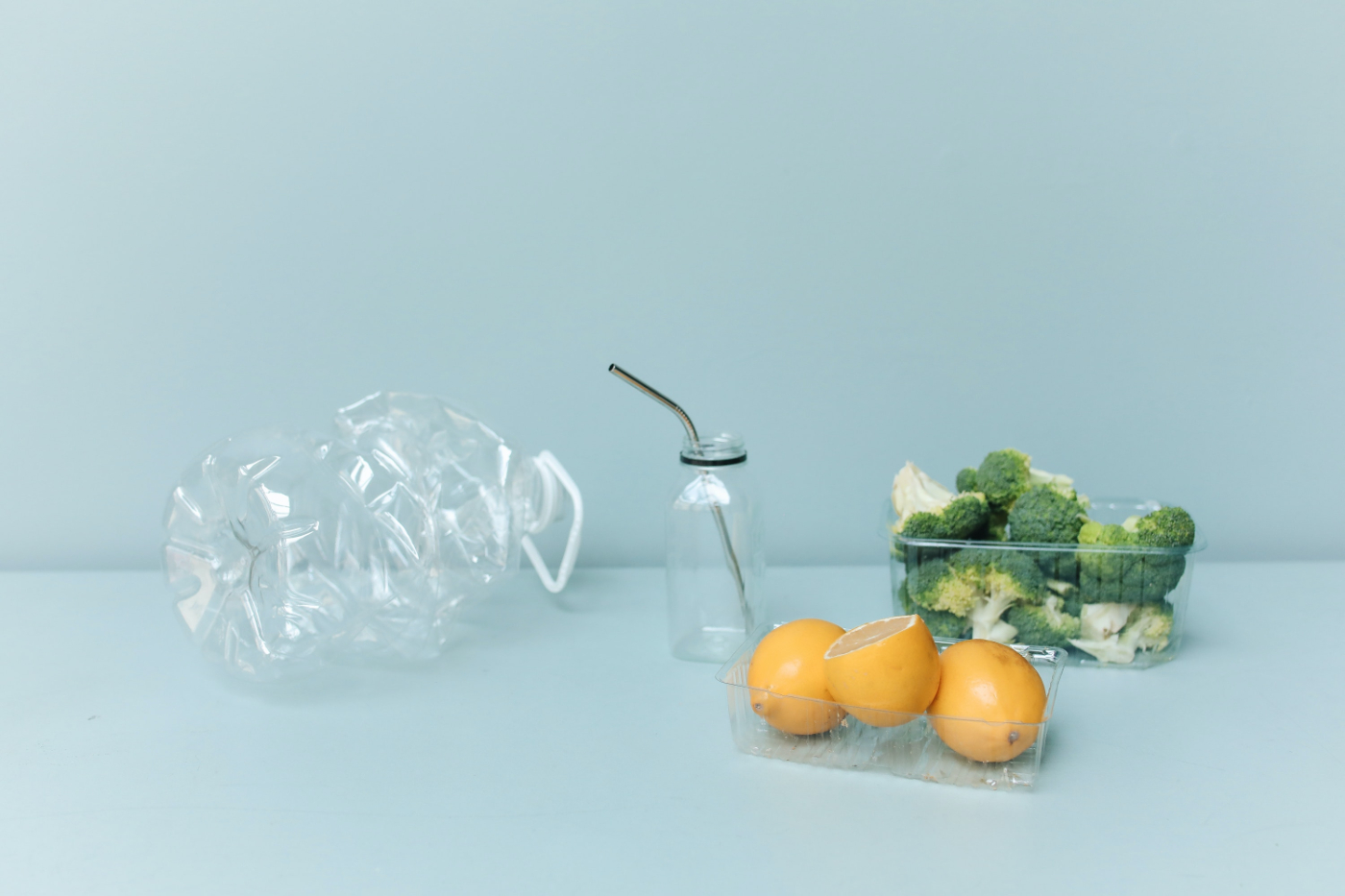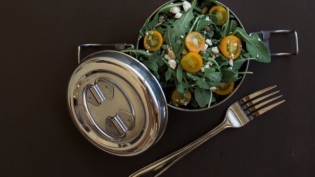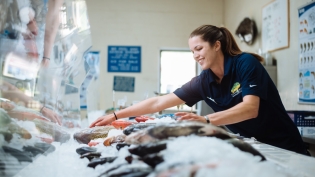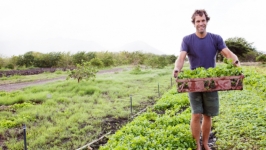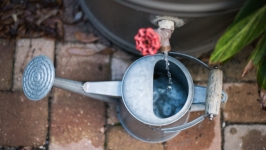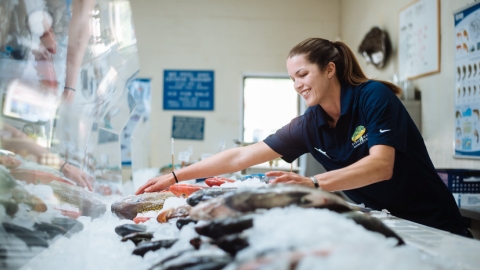Plastics Are Everywhere: Are We Forked?
6 MILLION tons of single-use plastics are discarded every year
8 MILLION Tons of plastic trash lingers in our oceans
6% - Amount of plastic waste actually recycled in the U.S. annually
**********
Whether you stay or go, the use of non-durable, single-use plastics is ubiquitous in the food world. Utensils, to-go containers, even the bags used to carry our food are generally made from plastic.
While it may seem like plastics are a necessary aspect of food service, there are some encouraging signs of growing awareness among businesses and consumers that alternatives are indeed possible and available. More and more businesses are choosing environmentally friendly options and consumers are increasingly aware of their eco-footprint.
Still, next time you grab a meal on the move, think about the resources required to manufacture the plastic you’re using and where it ends up once you’re done eating. Recycling is a good option, but ideally, we’d be generating less plastic waste overall — keeping plastic trash out of landfills and oceans where it can be mistaken for food by sea creatures, harming them and potentially us when it becomes seafood on our plates.
**********
THE CHALLENGE: PLASTIC UTENSILS
* 40 BILLION plastic utensils are used every year in the U.S.
* Americans toss out enough paper and plastic cups, forks and spoons every year to circle the equator 300 times
* Plastic utensils can take up to 1,000 years to decompose
**********
Introduced in the 1940s, plastic utensils were mass-produced beginning in the 1950s. Since then, these single-use items have found their way into most aspects of dining outside the home. Especially a problem for grab-n-go meals, we hardly think twice when offered that plastic-wrapped set of cutlery and napkin. But, the vast majority of plastic cutlery can’t be recycled. Most plastic cutlery is made from a type of plastic known as polystyrene, which is very difficult to recycle, and most cities don’t offer polystyrene recycling. As a result, plastic cutlery thrown into a recycling bin is usually sorted out at the recycling facility and sent to a landfill. With nearly 44 million Americans eating lunch out every day, that adds up to a lot of trash. A survey by four major environmental groups determined that plastic utensils ranked among the 10 most-common trash items found in California.
What’s an environmentally conscious diner to do? Some cultures eat with their hands, though admittedly, that's not always practical or socially acceptable here. Some companies are manufacturing edible forks and spoons, which, if not eaten, are compostable. These products, made from grain, potato starch and sorghum, are a better option, but they still require a lot of energy and water to produce.
ALTERNATIVES
• Bring your own. Tuck a fork or spoon into your purse or pocket.
• Keep reusable utensils at the office.
• Ask yourself if you really need that proffered packet of plastic ware, especially if heading home or to the office.
**********
THE CHALLENGE: TO-GO CONTAINERS
* 31 trillion lbs - Estimated amount of polystyrene made globally on an annual basis
* 426 TIMES - The amount of polystyrene cups used each year in the U.S. would circle the Earth
**********
Guess what material is most commonly used for food to-go containers? If you said Styrofoam™, you’re wrong. It’s actually expanded polystyrene (EPS) foam, a lightweight substance manufactured from petroleum-based polystyrene beads (Styrofoam is a trademarked brand from Dow Chemicals that has never been used to hold food or drink).
What’s so bad about single-use to-go containers? For starters, that expanded polystyrene package cannot be recycled, though many have a recycling symbol. Once it gets to the landfill, that foam releases methane gases that have over 20 times the ozone-destroying potency as CO2. On top of the harm to the environment, there is also evidence that the chemical styrene (a component of polystyrene) may be a carcinogen and can leech into food and drink.
Given the inexpensive cost of EPS products, it's hard for many restaurants to shift their usage toward more environmentally friendly containers, and customers don't always recognize greener options as an added expense.
ALTERNATIVES
• Opt to eat-in and use reusable serviceware.
• Consider sharing a meal so big portions won't require a to-go container at all.
• Look for to-go containers made with recycled content. The higher the percentage of recycled materials, the better.
• Be aware that sustainable products can often cost a bit more to provide to customers. Be sure to thank restaurant owners for choosing sustainable options.
• As a customer on the go, ask for aluminum foil or paper alternatives that can be recycled when clean.
**********
THE CHALLENGE: PLASTIC BAGS
* 4,950,000,000,000 - Number of plastic bags trashed each year
* 12 MINUTES - Average amount of time a plastic bag is used.
* 1 million - Number of single-use plastic bags used globally every minute
* 1% - Plastic bags actually recycled each year
**********
Compostable containers are great! But if you are bundling them in a plastic bag provided by the restaurant and carrying them to your home or office, you are still contributing to a landfill problem. Over 200 counties and municipalities in the U.S., including Austin, Chicago and Seattle, have enacted ordinances either imposing a fee on plastic bags or banning them outright. A 2013 study found that after San Jose, California, enacted a bag ban, there was nearly 90 percent less plastic in the city’s storm drains and almost 60 percent less in its streets than there had been before. This data helped finalize a statewide ban in California. Other states, such as Florida and Arizona, have passed laws prohibiting bans on plastic bags statewide, so that local municipalities would be prevented from passing their own ordinances.
ALTERNATIVES
• Bring your own cloth bag or reuse a bag you've been given before.
• Better yet, skip it altogether.
Know a local business that's doing great things to reduce their eco-footprint? We would love to know about them! Tag us @edibleneflorida


